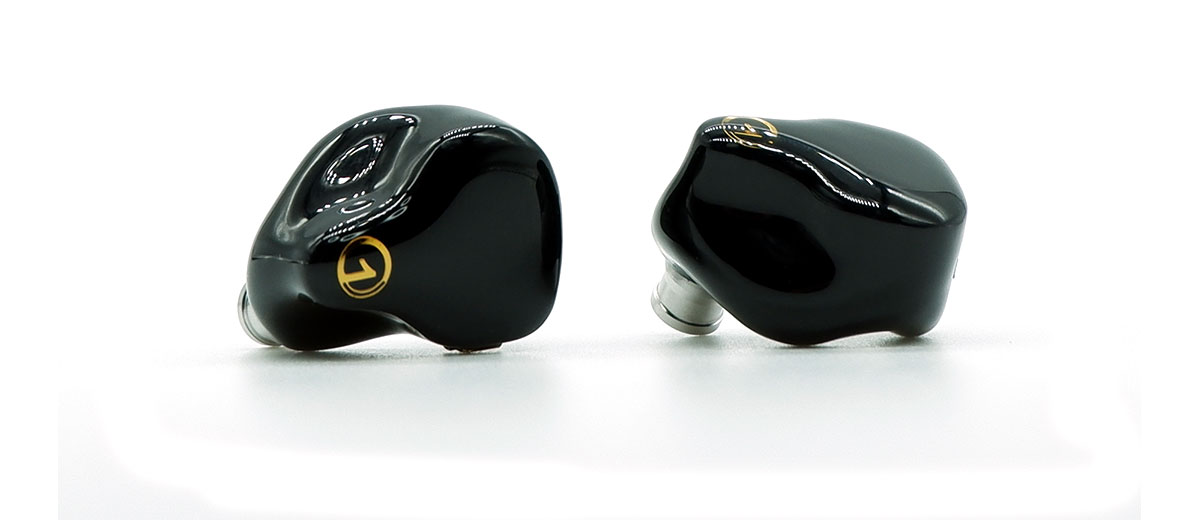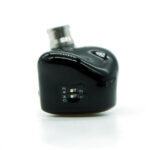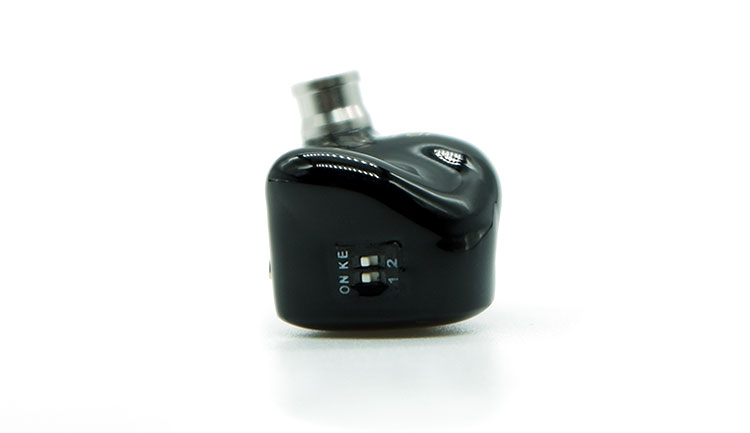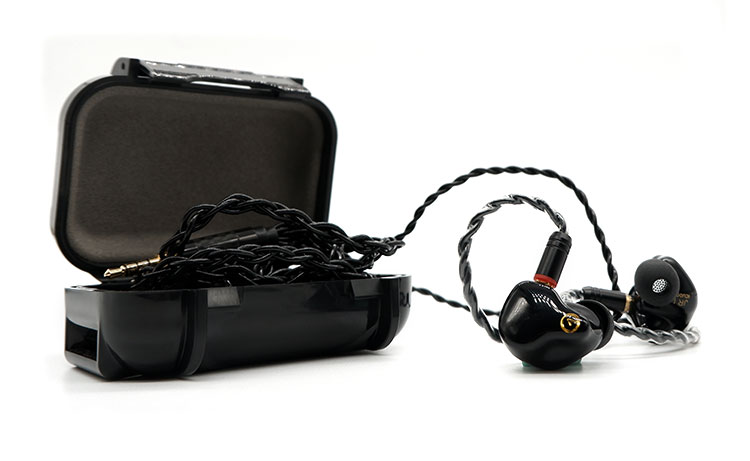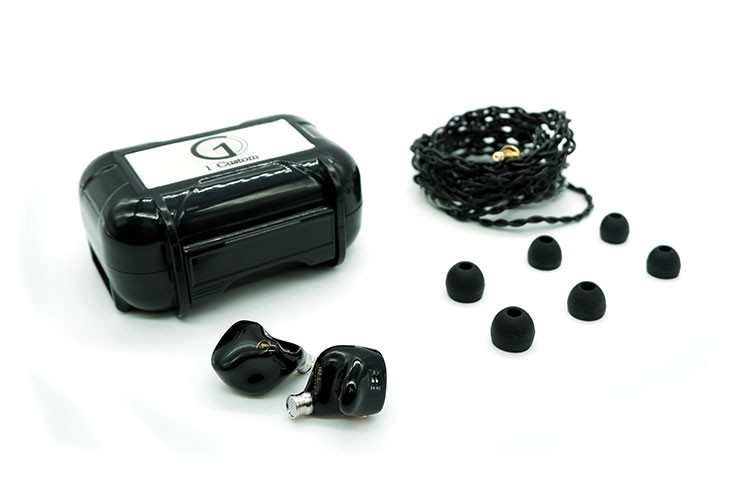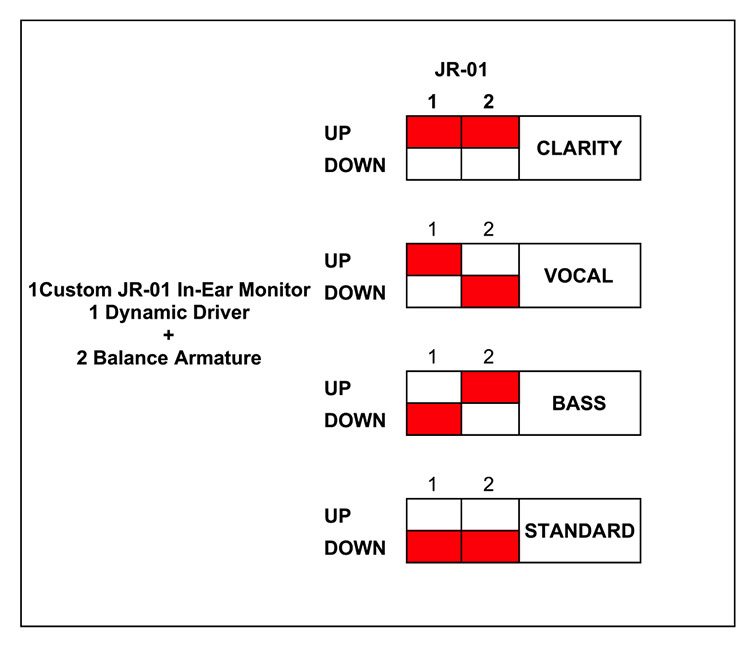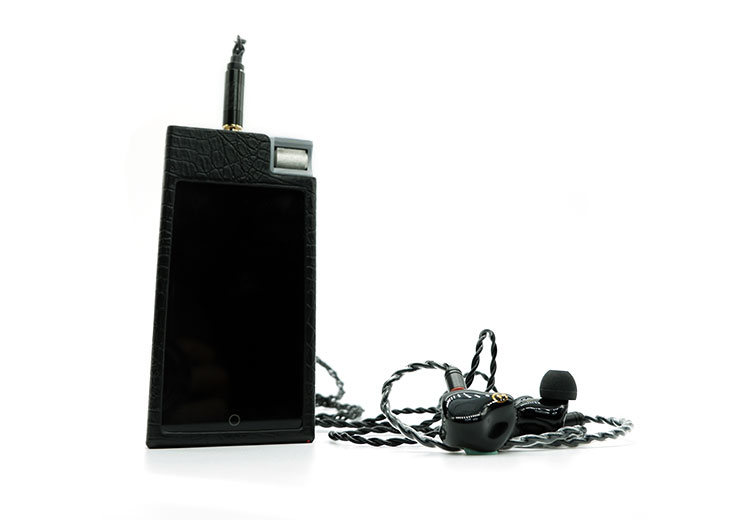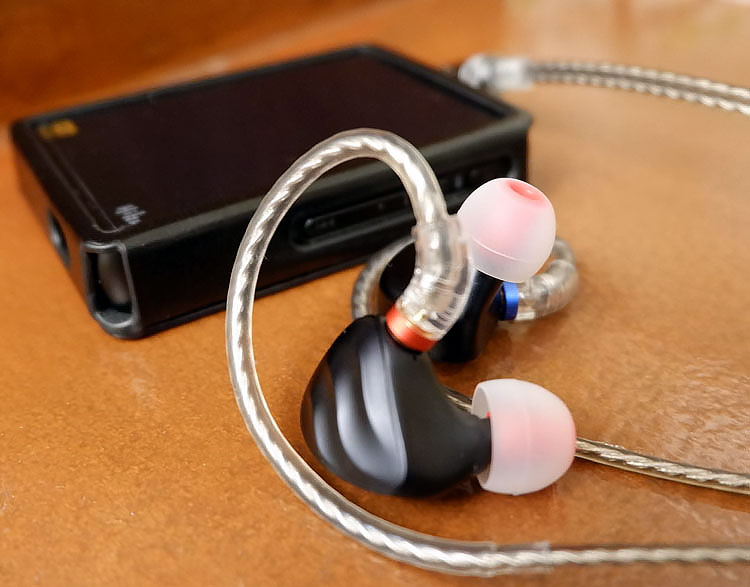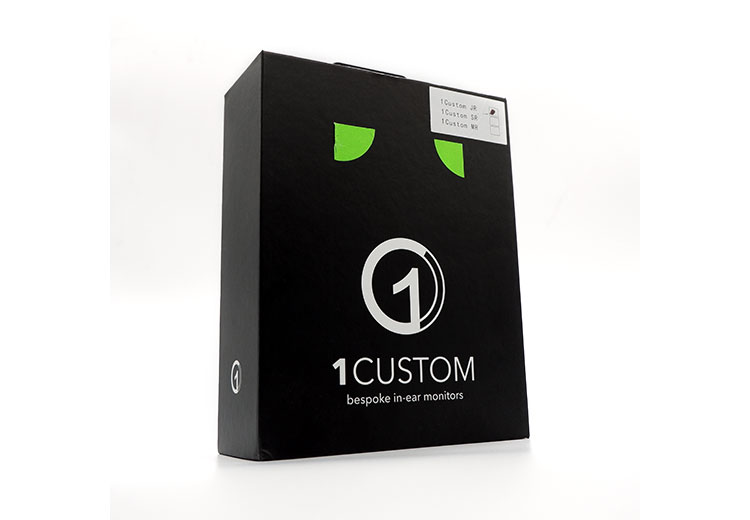The Jaben 1Custom Junior is a hybrid universal IEM featuring a single dynamic driver and two balanced armatures. It is currently priced at $138.26.
Disclaimer: The Jaben 1Custom Junior sent to us is a sample in exchange for our honest opinion. We thank Jaben for this opportunity.
To read up on more Jaben products we have reviewed on Headfonics you can click here.
Note, this review follows our new scoring guidelines for 2021 which you can read up on here.
Jaben is a headphone store that started in Singapore, but they have since branched out to more stores throughout the Southeast Asian region. With their network of dealers, they have also come up with their own line of products, which include desktop amplifiers, and 1Custom branded IEMs.
The 1Custom brand of IEMs currently has 5 IEMs, and a pair of TWS earbuds. The 1Custom line of IEMs started with the Jr, Sr, and the Master.
The common thread between the 3 IEMs is that their sound signature can be customized using dip switches mounted on the IEM shells themselves. Jaben sent us their entry-level 1Custom Junior for review, and we’re here to see how it competes in the sub-$200 IEM market.
Tech Highlights
In terms of specifications, they are sparse at best. The only information that can be found online about the 1Custom Junior is that they are equipped with 3 drivers(1DD + 2BA). And they have dip switches that allow for sound signature customization.
Design
The cable that the Junior comes with has a remote control, which is quite unique for a pair of IEMs that are aimed at audiophiles. It would work well with phones, but some DAPs might have issues with the remote control cable. Fortunately, the Junior is terminated in MMCX connectors, so finding aftermarket cables isn’t that hard.
The Jr has shells that have a custom-like appearance that has become quite common with many IEMs lately. On the side of each shell are vents, and a pair of dip switches that can adjust the tonality of the IEM.
There are instructions on what kind of tonality to expect from the different configurations of the dip switches, which probably compensate for the noticeable lack of extra ear tips.
Each shell is molded to ergonomically conform to the curvature of the concha, and the shiny coating ensures the longevity of the sheen of each shell.
While each shell is molded, the Junior also has metal nozzles that have a lip. The lip will be useful to ensure that most ear tips will stay in place and not slide off and get stuck in your ears.
Comfort & Isolation
The body of each IEM shell is molded, and when worn, they feel comfortable in my ears. The size of the nozzle is also a good fit, without becoming bothersome despite wearing them for more extended sessions.
Despite not being inserted deep into the ear canal, the Junior has a good amount of isolation. It could be improved with stiffer ear tips though. However, the stock ear tips do well in isolating the outside noise when music is playing.
Package & Accessories
When the box arrived, it had a sticker with a tick mark that indicates JR, SR, or MR. I figure they’re using the same box for all 3 IEMs in their 1Custom line of IEMs. The box is just your typical affair with a magnetic closure flap and foam inserts inside the box that keeps the IEM safe while in transit.
Upon opening the box, the IEMs themselves are arranged inside cutouts in the foam inserts, while there is a space for the carrying case which houses the cable, and 2 pairs of extra ear tips.
The carrying case is a compact black hard shell carrying case that will house the IEMs and cables, but not much else. This makes the Junior portable and secure.
Sound Impressions
My sound impressions were done with the default tonality. Any changes from the use of different dip switches will be explained in the dedicated section below the sound impressions.
Bass
With the dynamic driver producing the bass frequencies, I would assume that there would be the typical bass roll-off and the punchy mid-bass region found on most dynamic drivers. Interestingly, the sub-bass on the Junior does not roll off too early, and it can present the sub-bass notes on the introduction to Drink Up by Train.
The mid-bass hump that I expected is also not there though, as the mid-bass sounds like it has the same level of quantity as the sub-bass region. Bass tends to be more localized than environmental on the Junior, as there seems to be a point source, or at least a region within the soundstage that plays the bass.
With songs that have both a bass guitar and an underlying drum beat, the drum hits are immediate and punchy, while the bass guitar remains lush and flowy. In busier passages though, the Junior seems to slightly lose control over the bass region.
Midrange
On first listen, the midrange on the Junior seems slightly pushed back, and it is. However, the midrange is presented with a good amount of details and texture. With male vocals like Michael Buble’s vocals on Gotta be Patient, it almost sounds like the vocals are sculpted. Guitars are also very well defined, with a natural timbral quality.
With instrumental pieces that mainly have a piano, the sound is very full and bright. The harmonic balance between the midrange and treble is spot on though, and it doesn’t lead the harmonic overtones of the piano to become too bright in any way.
Despite being slightly pushed back, the Junior has an overall natural timbre for midrange instruments, while it can also render midrange details very capably.
Treble
The treble on the Junior is slightly more forward than the midrange. With songs that have tambourines, the tambourines are rendered well, with a controlled but shimmery character. The treble on the Junior is also extended quite well, and a sense of airiness is easily perceived.
In Everything’s Magic by Angels and Airwaves, there’s a cymbal roll at the start of the song. Typically, it isn’t that easy to display a coherent presentation of that cymbal roll, as it might turn out too bright or splashy. With the Junior, the cymbals felt very clear and retained a sense of bite with each hit of that cymbal.
Staging
With classical recordings, the Junior can create a good sense of space with an expansive soundstage. The image is expansive, and there isn’t much of a limit to how far the stage stretches. The instruments are placed quite close though, but the images that are created are quite coherent.
The Junior can also create a holographic center image. There are instances that I would believe that there is a real guitar playing in front of me when it’s just the music coming out of the Junior The center image is pushed forward, while still retaining a sense of depth and directionality within the soundstage.
While the soundstage is wide and open, the placement of the elements is quite intimate. Lateral directionality is wide enough, but not too far out of my head, while the center image is pushed forward just enough to make the soundstage very believable.
Dip Switches
Inside the box, there is a card that indicates what each dip switch position is supposed to do with the sound. I was initially confused, but I soon found out that the red areas represent the switch position.
While listening to the different configurations of the dip switches, it was apparent that the enhancements in each frequency range are not limited to just boosting a particular frequency range. Instead of just boosting any range, the switches slightly increase the quality of any particular frequency range.
Bass & Vocal Mode
With the standard as the bassline, the bass quantity is slightly increased in bass mode, but more importantly, the bass tones and drum beats sound more rounded. Turning on vocal mode would slightly increase the midrange, but also give a bit more texture to the vocal range bringing more details into the front.
Clarity Mode
Finally with clarity mode, both the effects of the bass mode and the vocal mode work in conjunction. Starting with the upper midrange though, there are no perceivable differences between any of the dip switch positions.
Initially, I had the impression that the dip switches are meant to be a substitute for tip rolling. However, the effects of the dip switches are more subtle, but in a way more valuable than simply tip rolling since each mode slightly increases the quality of the focused frequency range.
Synergy
With the in-line remote attached to the cable on the Junior it’s partly designed to work with mobile phones and my phone did a good job with powering the Junior I never went beyond 75% of my phone’s full volume, so it’s quite easy to drive. However, it would be very limiting to stick to just listening on my phone with the Junior
I was pleased to hear that the sound was further enhanced when I powered the Junior from better sources such as the Cayin N5ii. The soundstage was enhanced in that there is much better layering within the soundstage, and there’s a blacker background.
Of course, the Junior can be driven off of a phone if there are no other sources available, but it’s still resolving enough that it would surely scale up together with better upstream gear.
Eartip rolling
Although the ear tips that were provided with the Junior are not bad, I believe that the stem is on the softer side. A stiffer stem and a smaller nozzle would have been better for a more impactful bass region. Replacing the ear tips with a pair of Final Type E ear tips boosted the mid-bass region significantly, while slightly decreasing the treble sparkle.
I then found another pair of aftermarket tips with stiffer nozzles that had a bore size that’s slightly larger than the one on the Final Type E, while still being smaller than the stock ear tips.
I believe these ear tips did the trick for me with the Junior It boosted the mid-bass region while retaining most of the crystal clear shimmer in the treble region.
Select Comparisons
FiiO FH3
Technical
The first thing that I wanted to compare to the Junior is FiiO’s take on a hybrid triple driver system, the FH3. Driver count is not the only thing that they have in common though, since the FH3 retails for around $10 less than the Junior.
Out of the box, the FH3 immediately has an edge, since FiiO was more generous with its accessories. The FH3 came with 4 types of ear tips, instead of just the stock ear tips with the Junior. The carrying case is about the same on the 2, but the one on the Junior is just a bit smaller so carrying it around will be easier.
The cable on the Junior has remote controls so it would be more versatile in case you want to plug it into a phone and want to control the track without taking your phone out.
While the additional ear tips on the FH3 might seem like an advantage, but the Junior has tuning dip switches that can change the sound character in different ways than ear tips.
Both IEMs have similar contoured designs and MMCX terminations. The materials are different though with the FH3 using a coated aluminum shell whereas the Junior has a resin shell.
Performance
Tonally, the FH3 is a bit warmer than the Junior, since the FH3 is a bit more heavy-handed on the bass region. However, the impact of bass hits has more bite with the Junior, so elevating the bass on the Junior with ear tip rolling can compensate for the slight tendency for bass shyness.
The midrange is about equally textured, but the timbre of midrange instruments sounds a bit more natural on the Junior
Treble is equally detailed on the 2 IEMs, however, when it comes to the sparkle, the Junior edges out the FH3 by a bit. The slightly more elevated treble on the Junior gives it a bit more bite with cymbals than the FH3. They are equally airy though.
While the Junior creates a wider soundstage, the FH3 has a more intimate vocal presentation because of the more forward nature of its midrange. Image directionality, positioning, and coherence are neck and neck though since the FH3 makes the most of the narrower soundstage.
With the same driver count and similar price, it would be tempting to assume that the FH3 and the Junior will sound the same. However, 1Custom and FiiO have different takes on a triple driver hybrid IEM, with FiiO having a warmer, more intimate presentation, while 1Custom has a more spacious and airy presentation.
Mangird MT4
Technical
At first glance, the Junior and the MT4 have quite a few similarities. The two IEM shells are made with heavily contoured resin shells and metal nozzles with a lip. However, the default configuration of the MT4 is connected with a 2-pin connection while the Junior has an MMCX connection.
The package of the 2 IEMs are also very similar, with both using a magnetic flap closure with foam inserts that accommodate a case, the cable, the IEMs, and some extra ear tips. The cable on the Junior comes with an in-line remote control that can be used on phones though. However, the MT4 comes with some extra ear tips in the box.
The configuration of the MT4 uses an extra BA driver over the Junior. This might seem like a slight disadvantage on the Junior’s part, but driver count isn’t everything. Tuning and proper synergy of the drivers will also play a big part in differentiating the 2 IEMs.
Performance
With both IEMs using their stock ear tips, the MT4 tends to sound bassier. They both reach deep into the sub-bass region, but the MT4 has a slight mid-bass hump that helps bass become more apparent. Drum hits are equally punchy, but the decay is slightly longer on the Junior
The midrange of the 2 IEMs are equally recessed, but the MT4 has a more plucked character than the Junior. The Junior can present the ethereal character of the vocals more clearly than the MT4. Instrumental timbre is equally accurate though, as both can present guitars and pianos very naturally, but again, the Junior is just a bit smoother.
Treble on the MT4 is comparatively more pushed back with a shorter decay, but the detail retrieval is comparable on the 2 IEMs. The crystalline quality of the treble tends to be more apparent with the Junior because of the more forward treble region.
However, when listening closely to tracks where the treble region is busier with cymbal rolls and synthesizers both the MT4 and the Junior keep a composed stance in their presentation.
Both the Junior and the MT4 have about the same width and shape of the soundstage. However, the MT4 is slightly more intimate sounding since it pulls in more sound elements than with the Junior. Both are equally airy, and expansive, while still having a good sense of directionality. The MT4 can create a slightly sharper image within the soundstage though.
Our Verdict
The 1Custom Junior is an IEM that can easily compete in the sub-$200 market. The stock tonality of the Junior is on the slightly brighter side, but it does offer a smooth bass region and a euphonic midrange with a wide soundstage.
While the tonality might not appeal to all, ear tip rolling and the dip switches for fine-tuning adjustments will make the 1Custom Junior a great platform for customizing an IEM that can appeal to a wide variety of tastes.
1Custom Junior Specifications
- of Drivers: 1 Dynamic Driver + 2 Balanced Armature
- Connector: MMCX
- Termination: 3.5mm Stereo

